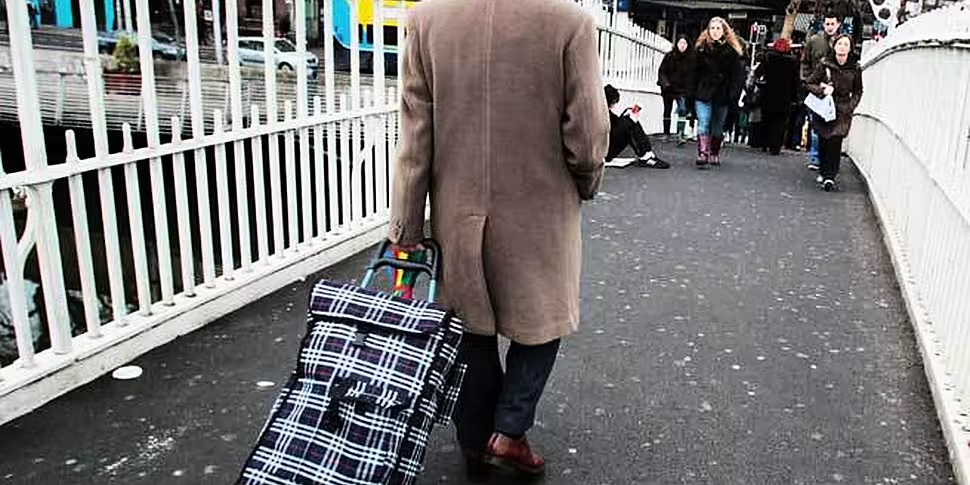At every election parties seek to find an edge that will swing decisive votes in their direction. While most politicians recognise that the older vote (generally referred to as the grey vote) is important, many do not realise just how crucial it actually can be.
The reality is that the age group with the greatest propensity to vote is the cohort of those aged 65+. Research has shown that 78% of this age group use their vote - contrasting sharply with the 18-24 sector were only 43% make the trip to the polling station.
This means that in the upcoming General Election some 485,000 of our senior citizens will cast their vote. Given that it is almost certain to be a close-run contest the proverbial 'every vote counts' has never been truer.
These 485,000 votes, which are some 22% of the total likely turnout, could well determine the formation of the next Government especially as they will be decisive in constituencies where there is a relatively high percentage of over 65s.
Grey issues
Within this group there are certainly well-off pensioners - including former bankers, lawyers, consultants, high ranking public servants and of course politicians. However the majority have to exist on the State pension of €233 per week, with the recent budget having given an extra €3 per week – not enough to buy a pound of mince.
Prescription charges have escalated despite promises to the contrary. Some 28% of pensioners live alone, many in isolated rural areas with the constant fear of crime. Garda stations, post offices and village pubs have closed and public transport is often unreliable.
There are regular rumours of the free travel pass going the way of the telephone allowance and being discontinued. They fear that if they need to spend their final years in a nursing home the Fair Deal scheme will still be inadequately funded.
However for many the greatest loss is their sons and daughters having had to emigrate because of the recession. The only way they can see them and their grandchildren is through Skype, Facetime or similar internet-driven outlets.
For that you need broadband. The irony is that many of the emigrants came from the counties furthest from Dublin where the broadband coverage is at its worst. Even where it is available the cost leaves many pensioners with the dilemma of keeping in direct contact with their families or sacrificing something else.
So it is within this context that many of this significant block of voters will make their choice as to who will best serve their needs.
Grey areas
The constituencies with the largest proportion in this age group are Dublin Bay North and Dublin Bay South.
Dublin Bay North is already being touted as the “constituency of death” with the former 3 seat constituencies of Dublin North-Central and Dublin North-East being merged into a single 5 seat constituency. Apart from the 5 outgoing TD’s (Sean Kenny of the Labour Party is not running) Richard Bruton, Finian McGrath, Aodhan O Riordain, Tommy Broughan and Terence Flanagan, there are serious challengers from Fianna Fail, Sinn Fein and other high profile candidates from across the political spectrum.
There will be almost 20,000 over-65s who will vote - that equates to 1.53 quotas, so the impact that they will make is obvious.
Dublin Bay South has 1.46 quotas of over-65s and there are another 23 constituencies with the equivalent of at least one quota.
So, who is this crucial group most likely to vote for?
An analysis of recent opinion polls reveal that Fine Gael gets some 40% of this vote, which if there is a similar turnout to 2011, would amount to some 194,000 votes giving an average of 4,850 per constituency.
However there are vast differences between constituencies in the number of votes available from this sector. As highlighted above Dublin Bay North has the highest 65+ vote with just fewer than 20,000 whereas Dublin West has only 6,500.
Should the election mirror the opinion polls then in Dublin Bay North, Fine Gael would get some 8,000 votes from the over 65’s. This would equate to two thirds of a quota while in Dublin West it would be about 2,600 which is less than one third of the likely quota.
Fianna Fail is the second biggest recipient of this vote with some 24% declaring their preference for the party. This equates to some 116,000 votes which is an average of 2,900 votes per constituency, ranging from the possibility of 4,800 in Dublin Bay North (0.37 of a quota) to Dublin West with 1,580 (0.19 of a quota).
Sinn Fein has 9% of the grey vote which equates to 44,000 while Labour Party has 7% or 34,000.
Perhaps it is somewhat surprising that 20% of the most senior segment, and arguably most conservative of our electorate, would be prepared to vote for the Others. Yet given the isolation so many endure, Independents such as Michael Healy Rae, who concentrate on their constituents maybe it is not so surprising after all.
While this grouping incorporates independents of various hues it does lean significantly to the Left as do the majority of the smaller parties. Given that this equates to some 97,000 votes it could have a distinct influence on a number of constituencies, either with first preferences or subsequent transfers.
One thing is certain; that any party or candidate who ignores the views of our senior citizens is risking the possibility of ending up in the loser’s column.









